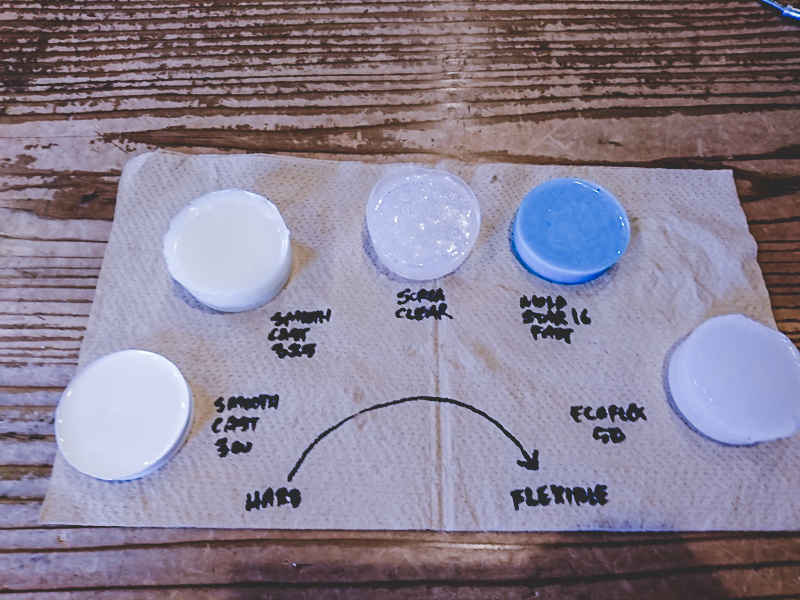10. Molding and casting#
group assignment review the safety data sheets for each of your molding and casting materials, then make and compare test casts with each of them
Material Datasheets#
Smooth Cast 300#
- TB / SDS
- Color: White
- Pot Life: 3 minutes
- Cure Time: 10 minutes
- Mix Ratio By Volume: 1A:1B
- Mix Ratio By Weight: 100A:90B

- liquid plastics. ultra-low viscosity casting resins
- Not a hazardous substance or mixture
- safety glasses and gloves recommended
- some heat of reactions
Mold Star 16 Fast#
- TB / SDS
- Color: Blue-Green
- Pot Life: 6 minutes
- Cure Time: 30 minutes
- Mix Ratio By Volume: 1A:1B
- Mix Ratio By Weight: 1A:1B
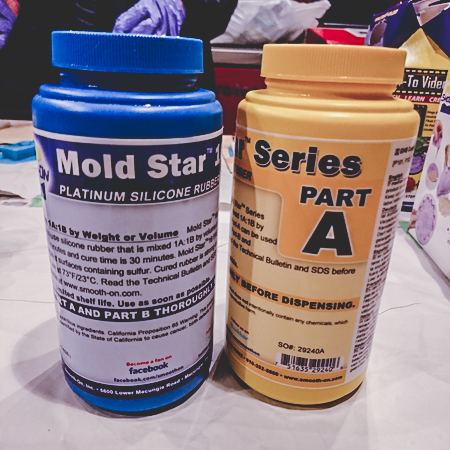


- platinum silicones
- Not a hazardous substance or mixture
- safety glasses and gloves recommended
Smooth Cast 325#
- TB / SDS
- Color: Clear Amber
- Pot Life: 2.5 minutes
- Cure Time: 10 minutes
- Mix Ratio By Volume: 1A:1B
- Mix Ratio By Weight: 115A:100B
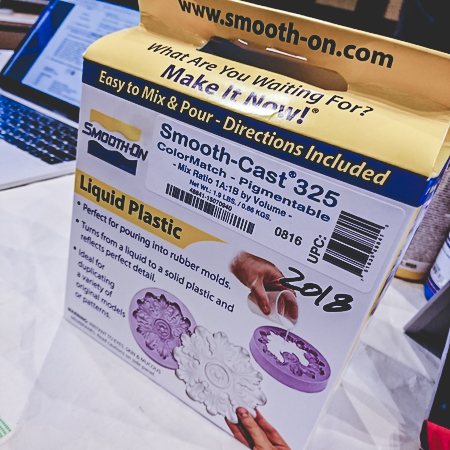

Safety datasheet part A
- Polyeurethane Elastomer…flexible
- Safety Requirement: wear eye, mouth/nose, gloves, sleeve protection
- Don’t eat or breathe, touchng will cause irritation
- Part B…no hazzard
This material, among the 5 we tested in the lab, is the one with the greatest hazzards. Many of them Class 1 and 2 (the highest risk) Eye, nose, mouth, skin protection needed to work with this material.
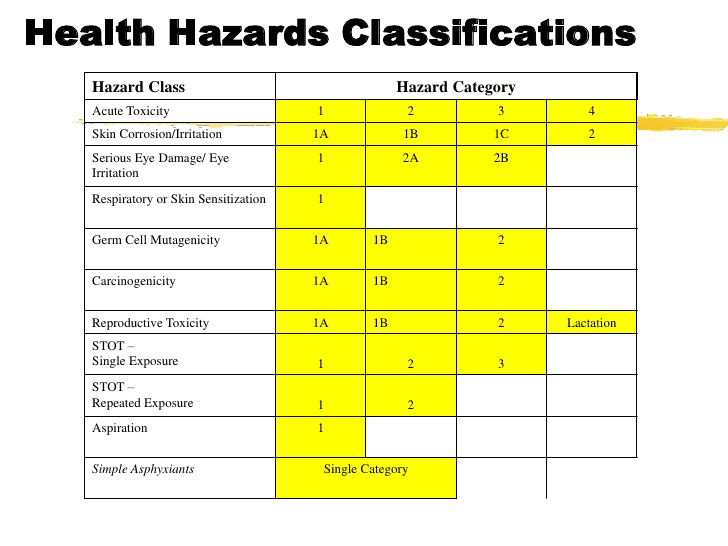
Ecoflex 50#
- TB/SDS
- Color: Translucent
- Pot Life: 18 minutes
- Cure Time: 3 hours
- Mix Ratio By Volume: 1A:1B
- Mix Ratio By Weight: 1A:1B
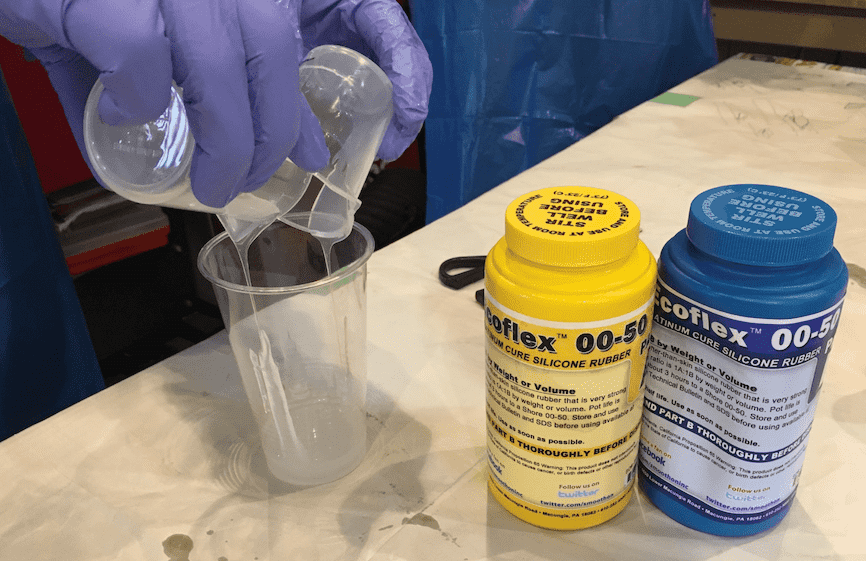

- Platinum Cure Silicone Rubber Compound
- non-hazzardous
- safety glasses and gloves recommended
Sorta Clear 37#
- TB / SDS / Food Safe Technical Bulletin
- Color: Water Clear Translucent
- Pot Life: 25 minutes
- Cure Time: 4 hours
- Mix Ratio By Volume: 1A:1B
- Mix Ratio By Weight: 1A:1B
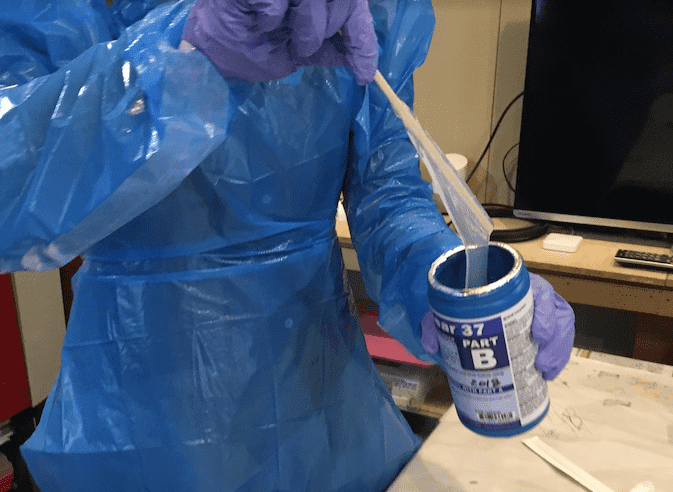

- Food safe
- Non-hazzordous
- safety glasses and gloves recommended
Safety Prepartations#
Taking safety seriously.
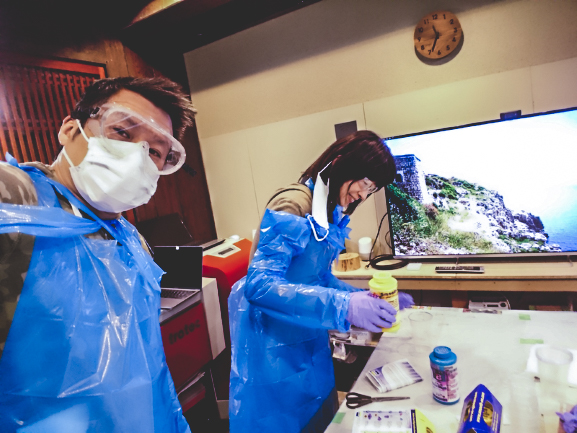
- Goggles
- Masks
- Apron with sleeves (avoid particles attaching to our clothing)
- Gloves
Material Observations#
These are our impressions of working with the various materials. All the materials were 2-part mixes of two chemical compounds in liquid form.
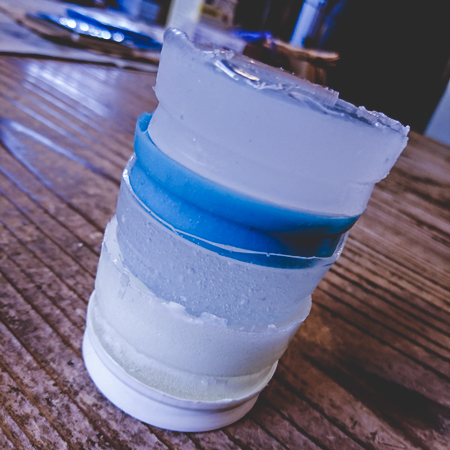
Mold Star 16#
- Use: As the name suggests, the primary use of this material is for making casting molds
- Pour: Medium viscosity…pours like thick honey
- Mixing: Mixes with a bit of effort…the 2 parts are different color…must mix until it becomes a single color
- Curing: Fast cure time…non-malleable after only about 5mins
- Post Processing: Can post-process away flashing and burrs with a sharp knife…no other post-processing needed
- Finish: Cures into a flexible but seemingly strong, solid blue color finish. Peels easily away from wax molds.
- Flexibitlity: Second most flexible among the materials we tested, bends and distorts with little force
Smooth Cast 300#
- Use: Used primarily for final object Casting
- Pour: VERY low viscosity…pours like thin honey
Pro tip: use chopsticks under the lip of the container when pouring) to control the direction of the pour stream…prevent dribbling back to the side of the canister
- Mixing: VERY easy to mix…but be mindful of making bubbles
- Curing: Cures in minutes…starts to harden within a couple of minutes, full hardness at 10 minutes; tangible warmth when curing
- Post Processing: Can post-process away flashing and burrs with a sharp knife…not certain if it can be sanded
- Finish: Hardens as a beautiful, opaque white plastic finish
- Flexibitlity: Zero flexibiltiy
Smooth Cast 325#
- Use: Not certain why this material would be used when other better, low-hazzard options exists…
- Pour: Medium viscosity…pours like thick honey
- Mixing: Mixes with a bit of effort…but be mindful of making bubbles (it is possible that we either did not get the mix ratio between part A and B correct or did not mix well…which led to poor results)
- Curing: Long cure time…hours; tangible warmth when curing
- Post Processing: Can post-process away flashing and burrs with a sharp knife…not certain if it can be sanded
- Finish: Hardens as a semi-opaque white plastic finish…not so beautiful
- Flexibitlity: Zero flexibiltiy
Ecoflex 50#
- Use: Used for making soft molds (?)
- Pour: Medium-high viscosity…pours like thick honey in cold weather
- Mixing: Mixes with a bit of effort…tendency to generate big bubbles that stay trapped in the material if mixing is too rough
- Curing: Long cure time…hours
- Post Processing: Can post-process away flashing and burrs with a sharp knife
- Finish: Cures as a semi-translucent finish of reasonable eveness
- Flexibitlity: Most flexible among the materials we tested, bends and distorts easily with little force…may be easily broken if too much force applied (?)
Sorta Clear 37#
- Use: Not certain why this material would be used when other better, low-hazzard options exists…
- Pour: Very high viscosity…pours like thick honey on a cold day
- Mixing: Mixes with a lot of effort, feels like mixing chopsticks would break…big bubbles generated and hard to remove
- Curing: Long cure time…hours
- Post Processing: Can post-process away flashing and burrs with a sharp knife
- Finish: Hardens as a semi-translucent finish…lots of air bubbles trapped (maybe needed to mix in higher temperature??)
- Flexibitlity: Some flexibility, distorts when a reasonable amount of force applied
Hardness/Flexibility Ranking#
